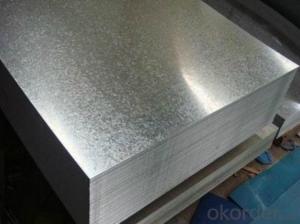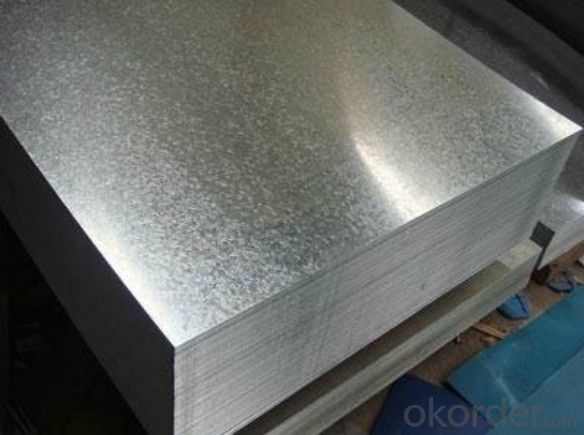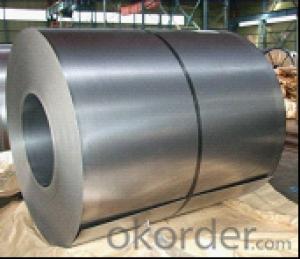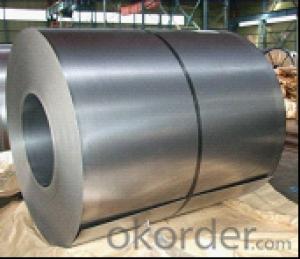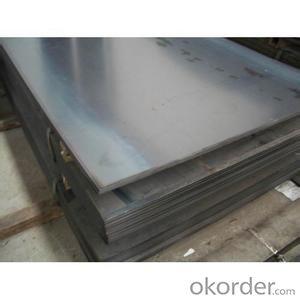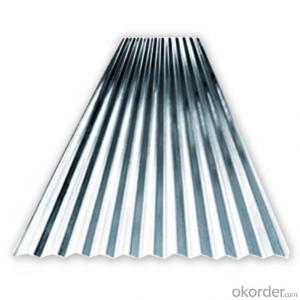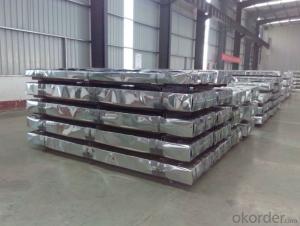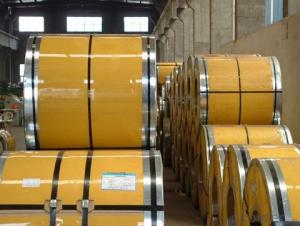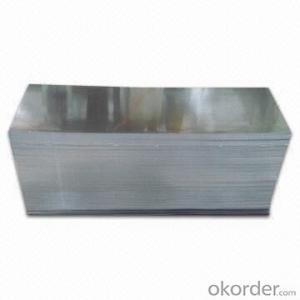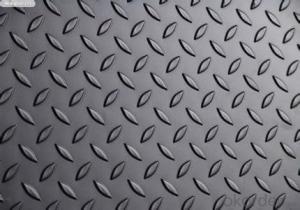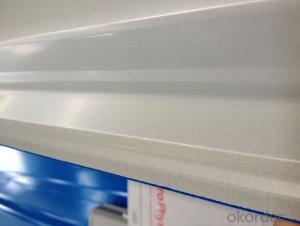Hot Dipped Galvanized Steel Sheets Regular Spangle
- Loading Port:
- Tianjin
- Payment Terms:
- TT OR LC
- Min Order Qty:
- 25 m.t.
- Supply Capability:
- 50000 m.t./month
OKorder Service Pledge
OKorder Financial Service
You Might Also Like
product information:
1)Operate Standard: ASTM A653M-04/JIS G3302/DIN EN10143/GBT 2518-2008
2)Grade : SGCD,SGCH, Q195,DX51D
3)Galvanized steel sheet /coil features:
4)Zinc coating :40-180g( as required)
5)width:914-1250mm(914mm, 1215mm,1250mm,1000mm the most common)
6)coil id:508mm/610mm
7)coil weight: 4-10 MT(as required)
8)surface: regular/mini/zero spangle, chromated, skin pass, dry etc.
9)application: Structural use ,roofing, commercial use, household appliance, industry, family;
special application: Wear resistant steel, high- strength - steel plate
Technical data :
Chemical Composition | ||||||
GRADE | C | Si | Mn | P | S | Ti |
SGCC/DX51D+Z | ≤0.10 | ≤0.50 | ≤0.60 | ≤0.10 | ≤0.030 | ≤0.020 |
DX52D+Z | ≤0.10 | ≤0.50 | ≤0.60 | ≤0.10 | ≤0.030 | ≤0.020 |
SGCD/DX53D+Z | ≤0.10 | ≤0.30 | ≤0.50 | ≤0.05 | ≤0.030 | ≤0.020 |
SGCE/DX54D+Z | ≤0.10 | ≤0.30 | ≤0.30 | ≤0.03 | ≤0.020 | ≤0.020 |
DX56D+Z | ≤0.10 | ≤0.30 | ≤0.30 | ≤0.03 | ≤0.020 | ≤0.020 |
Structural | ≤0.20 | ≤0.60 | ≤1.70 | ≤0.10 | ≤0.045 | |
hot dipped galvanized steel coil Mechanical Properties | |||
GRADE | Yield Strength MPa | Tensile Strength MPa | Elongation % |
SGCC(DX51D+Z) | ≥205 | ≥270 | - |
SGCD(DX53D+Z) | - | ≥270 | 38 |
SGCE(DX54D+Z) | - | ≥270 | 40 |
DX56D+Z | - | ≥270 | 42 |
- Q: Are steel sheets suitable for fire-resistant applications?
- Yes, steel sheets are suitable for fire-resistant applications. Steel is known for its excellent fire resistance properties. It has a high melting point and does not easily ignite or contribute to the spread of fire. Steel sheets can be used in various fire-resistant applications such as fire doors, fire-rated walls, and fireproof enclosures. Additionally, steel sheets can be combined with other fire-resistant materials, such as fire-resistant coatings or insulation, to further enhance their fire resistance. Overall, steel sheets are a reliable choice for fire-resistant applications due to their durability, strength, and ability to withstand high temperatures.
- Q: What is the thickness of the paint board?
- As a decorative wall painting board, the scale is greater, a 122*244*1.8cm UV paint board. The most common market in general is 15-18mm, one of 18mm's highest market share, in addition to 12mm, 9mm, 5mm thickness, if it is made, manufacturers generally have the ability to make 3mm-35mm between any thickness out.
- Q: How long do steel sheets last?
- Steel sheets can last for many years, often surpassing the lifespan of other materials. The longevity of steel sheets depends on various factors such as the quality of the steel, the conditions it is exposed to, and how well it is maintained. In general, high-quality steel sheets that are properly installed and maintained can last for several decades or even longer. However, if steel sheets are exposed to harsh environments, such as extreme temperatures, humidity, or corrosive substances, their lifespan may be reduced. Regular inspections, cleaning, and maintenance can help extend the lifespan of steel sheets and ensure their durability over time.
- Q: What are the safety precautions to consider when handling steel sheets?
- When handling steel sheets, some important safety precautions to consider include wearing appropriate personal protective equipment (PPE) such as gloves, safety glasses, and steel-toed boots to protect against cuts, burns, and impact injuries. It is also important to ensure proper lifting techniques and the use of mechanical aids such as cranes or forklifts to avoid strain or back injuries. Additionally, maintaining a clean and organized workspace, properly storing steel sheets to prevent tripping hazards, and regularly inspecting equipment for any signs of damage or wear are crucial for maintaining a safe working environment.
- Q: What is the difference between a painted and powder coated steel sheet?
- The main difference between a painted and powder coated steel sheet lies in the application process and the resulting finish. Painted steel sheets are typically coated with a liquid paint, which is applied using a variety of methods such as spraying, brushing, or dipping. This liquid paint contains pigments and binders that adhere to the steel surface and form a protective layer. The paint can be customized in terms of color, gloss, and texture, allowing for a wide range of design possibilities. However, painted surfaces may be prone to chipping, peeling, and fading over time, especially in harsh environments or with exposure to UV radiation. On the other hand, powder coated steel sheets are coated with a dry powder, which is electrostatically applied to the steel surface. The powder consists of a mixture of finely ground particles, including pigments, resins, and additives. Once applied, the steel sheet is heated, causing the powder particles to melt and fuse together, forming a durable and uniform coating. The result is a smooth, even finish that provides excellent resistance to chipping, scratching, and UV radiation. Powder coating also offers a wider range of color options and finishes compared to traditional liquid paint. In summary, while both painted and powder coated steel sheets provide a protective layer and aesthetic appeal, powder coating offers superior durability, resistance to damage, and a wider range of design possibilities.
- Q: Are steel sheets non-magnetic?
- No, steel sheets are generally magnetic.
- Q: Can steel sheets be bent without causing damage?
- Provided that the bending process is carried out with caution and within the material's limits, steel sheets can be bent without sustaining any damage. Various techniques, such as press brake bending or roll bending, are commonly employed to bend steel sheets. These methods involve applying controlled force and pressure to achieve the desired shape without causing any lasting deformations. Several factors influence the ability to bend steel sheets without harm. These factors include the thickness and grade of the steel, the bending radius, and the equipment and technique employed. Thinner sheets are generally more pliable and easier to bend, while thicker sheets may necessitate greater forces and specialized equipment. To ensure that the bending process does not exceed the steel's limits, it is crucial to consider its tensile strength, yield strength, and elongation properties. Over-bending can result in cracks, fractures, or permanent deformations that compromise the sheet's structural integrity. To prevent damage during the bending process, it is vital to follow proper bending techniques and guidelines. This includes using suitable tooling, distributing force evenly, and avoiding abrupt changes in direction or excessive bending angles. Additionally, preheating the steel sheet can enhance its pliability and reduce the risk of damage. In conclusion, steel sheets can be bent without damage, but it necessitates careful consideration of the material's properties, appropriate equipment, and adherence to bending guidelines. By employing the correct techniques and precautions, steel sheets can be successfully bent into various shapes and forms while preserving their structural integrity.
- Q: What are the applications of steel sheets in construction?
- Steel sheets are widely used in construction for applications like roofing, flooring, wall cladding, and structural components due to their durability, strength, and versatility. They provide a reliable and long-lasting solution for various construction needs, ensuring stability, fire resistance, and protection against harsh weather conditions. Additionally, steel sheets can be easily customized, allowing for flexibility in design and construction processes.
- Q: Can steel sheets be used for construction formwork or molds?
- Certainly, construction formwork or molds can utilize steel sheets, although their usage may not be as prevalent as materials like plywood or timber. Robust and enduring, steel sheets offer a sleek and uniform surface for concrete casting. They prove especially fitting for expansive construction ventures demanding formwork capable of withstanding immense pressures and loads. Additionally, steel sheets can be tailor-made and manufactured to meet precise project specifications, affording versatility in terms of shape, size, and arrangement. Nevertheless, the cost, weight, and accessibility of steel sheets should be weighed against alternative formwork materials prior to reaching a verdict.
- Q: How do steel sheets perform in extreme weather conditions?
- Steel sheets perform well in extreme weather conditions due to their durability and resistance to temperature variations, strong winds, heavy rainfall, and snow. They do not warp or crack easily, providing protection against harsh elements. Additionally, steel sheets have high corrosion resistance, making them suitable for areas prone to humidity or saltwater exposure.
Send your message to us
Hot Dipped Galvanized Steel Sheets Regular Spangle
- Loading Port:
- Tianjin
- Payment Terms:
- TT OR LC
- Min Order Qty:
- 25 m.t.
- Supply Capability:
- 50000 m.t./month
OKorder Service Pledge
OKorder Financial Service
Similar products
Hot products
Hot Searches
Related keywords
